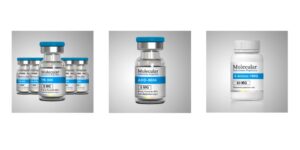
Most articles in this niche lead with the “advantages of LED light bulbs” so as to throw a positive light on the situation (no pun intended). However, we’re going to take a slightly different approach. We want to explore the disadvantages of HID bulbs.
For years now, HID lights have been a glowing standard (excuse that pun too) for wide-area interior and exterior lighting. They are used in low and high-bay lighting fixtures, in warehouses, production facilities, commercial outlets, stadiums, parking lots, and more.
And why they are relatively energy efficient and long lived, and in spite of their excellent light quality and color rendering abilities, they are not the best.
There are better solutions – namely, LED corn bulbs, also known as LED corn cob bulbs, some of which are compatible with HID fixtures – that are not only cost-effective but relatively easy to implement.
But why are they better – or rather, why are HID lights worse?
Here are the top reasons.
1. HID lights waste a lot of energy
Namely, as heat. As much as 30% of the energy released from HID lights is emitted in the form of infrared, which is not visible light. Not only does this decrease their luminous efficiency, but it produces a lot of heat, which means facilities administrators need to spend more money on cooling costs.
2. HID lights emit UV
HID lights typically contain special screens or filters to prevent the UV from getting through. Still, these high UV emissions can incur costly degradation of their light fixtures and circuitry around them. In some instances, these UV emissions can even pose a danger to health.
3. Lumen maintenance (HIDs lose efficiency and luminous output as they age, before they burn out)
HID lamps, despite their excellent luminous efficiency, fade slowly over time. There’s a long period of fading before the bulbs burn out during which it is not practical to replace the bulb but in which it also cannot perform at its previous level of performance.
4. HID bulbs contain toxic components, making it cost-prohibitive to dispose of them
HID lights (of various sorts) contain toxic compounds such as mercury or sodium. This makes it cost-prohibitive to dispose of them as they can’t be discarded with normal refuse. This also creates a potentially hazardous situation if any of these lights are broken.
5. HID lights have a long warm-up period
Some HID bulbs are worse than others – but in extreme cases, it can take these lights several minutes to reach peak brightness. This is not the only inconvenience associated with HID lights, as they require a ballast to operate normally; if there is an issue with the ballast, the bulb will buzz or flicker.
6. HID lights are not great where directional lighting is necessary
HID lights are considered omnidirectional, which means they emit light in a 360° fashion around the bulb. While this can be beneficial in some scenarios, wherever directional lighting is necessary, it becomes a drawback, as much of the emitted light will be wasted due to inefficient reflectors and scattering.
There Is a Better Solution: LED Corn Bulbs
After hearing all of this you might be wondering how LED corn bulbs can solve these problems.
Let’s take it in order.
LED corn bulbs, which in many instances are designed to be direct plug-and-play (or bypass compatible) replacements for HID bulbs, are entirely free of toxic components, produce very little heat, emit no UV, do not fade in the same manner as HID bulbs, have almost no warm-up period, and can be either directional or omnidirectional – whatever is needed.
They are also extremely long-lasting and energy efficient, which makes them even more appealing. LED corn bulbs are a great replacement for HID lamps because they are also available in a wide range of color temperatures and light outputs, too – making them ideal for saving energy and making a fairly close replacement to the traditional HID infrastructure that’s currently in place.
Want to learn more about LED corn bulb replacements for HID fixtures, and see what options are available for your facility? Visit Products for Automation online at ProductsforAutomation.com; they carry a wide range of lighting essentials, including LED corn lights.


